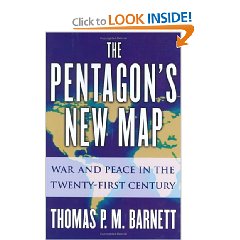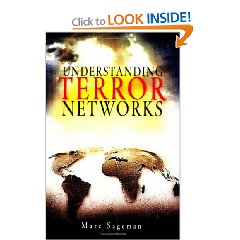1) Believe it or not, this book is in vogue within Army training circles and has even been recommended to the Commanding General of the Special Operations Command.
2) As a parent of three boys, 15, 12, 9, this book helped me appreciate the “new” knowledge that they have which offsets my annoyance at their being online too much. Every parent of young teens who have at least one computer in their home should read this book or one of the alternative recommended books–it will increase your appreciation for them. On page 117 the book makes it clear that kids have *better* judgment than their parents in evaluating high-tech as well as in navigating cyber-space, because they have different metrics, different patterns that they apply.
3) For my young teen himself, I marked pages 94-97, 102, 105, 109, 118, 123-124, and 129-130. He read those, liked them, and agreed that he would like to read the book. Super!
The book's opening is packed with insights–we're entering third generation of kids, six generation of videogaming, 50 million adults have now been “programmed” by earlier gaming, it is moving us from passive watching to interactive manipulation, and–well before Microsoft got this–it is creating an adult generation (at least in the US and Japan) that is juggling sixteen different information streams at once, with a result that most adults–including US general officers–are in what is called “constant partial attention” mode all of the time.
The author touches upon but does not discuss the offsets of millions (more like billions) in lost-time cost to those who play at work, versus how it changes our productivity. A very nice timeline of game evolution from 1962 to 1996 is provided early on. Somewhat interesting to me is the author's observations that the games and the new computer power have not changed the “basic plots” which tend to pursue the same enduring patterns that Shakespeare and others did…
Relevant to Department of Defense and Homeland Security: on page 35 there is a discussion that confirms my long-held belief that while DoD investments in very expensive earlier generations of computers helped spawn the consumer industry, the time has come for DoD to get out of the unilateral C4I business, and concentrate on improving security and functionality for the generic whole. We must depart from secret unilateral expensive C4I systems, toward open (but secure) generic inexpensive systems that can be thrown away easily while the data is ported over. This merits emphasis–on page 77 the author emphasizes that as hardware and software get fancier, they actually make it *harder and more expensive* to port data forward, and the author suggests that the true test of a new system should be FIRST, its ease of “reach back” to old data, and ONLY then, its ability to excel with new data. This is an extremely important point that I am fairly certain neither CIA nor DoD nor JFCOM take seriously.
Page 41 is helpful in discussing the “wife/whore” mindset that prevents the US in particular from merging tools–one complete set for “work”, one complete different set for “play”, leading to the obvious point that lots of money could be saved, and functionality cross-migrated, if we could break out of this mindset trap.
Page 89 sums up some really excellent coverage of how the earlier games rocketed in both sales and sophistication because of their commitment to giving out free simplified samples and the open source code. If we are ever to stabilize the world, we need to learn from this: generic open source software, open source intelligence, and open spectrum are the heart of 21st Century peacekeeping and capitalism, and anyone that does not get this is part of the problem. Open source (3) is the key to harnessing COLLECTIVE INTELLIGENCE (great Google search).
Unexpectedly for me, the author covers the “model Prisoner of War” or gulag/sweatshop of the modern videogame industry, and for those aspiring to working in this field, absolutely worth the price of the book.
Three final points that many will miss:
1) The book does a good job of noting that most games represent a form of cultural imperialism, value-free games that promote dominance through violence, and are not nuanced at all.
2) Boy games and girl games are different because boys and girls are different–boy games focus on violence and take-over, girl games focus on problem solving and peacekeeping. Obvious thought to me: use them to cross train boys and girls with one another's strengths.
3) Games are limited in both possible outcomes, and in terms of who is able to create them. THEY DO NOT PROVIDE FOR THE FOG OF WAR–while useful in terms of improving *technical* skills, they are NOT a substitute for real-world training with respect to *judgment*, *nuance*, and *situational awareness*. These games are lacking INTELLIGENCE in the combat sense. I was reminded by this section of an old Isaac Asimov short story, in which the world evolved to where everyone had to qualify to run an “expert system” and those that did not were “executed.” In the conclusion we learn that the ones executed were actually exported to a moon where they WROTE the expert systems, keeping the fiction alive that everything was okay with the machines back home. DoD is in that trap right now.
I liked this book–of the 10 or so recommended to the Special Operations leadership, this book and Marc Sageman's book on Understanding Terrorism are the only two that have been really worth my while.











